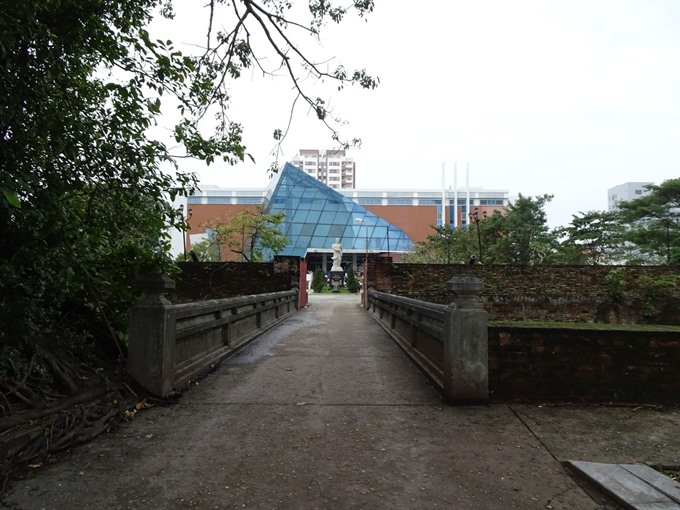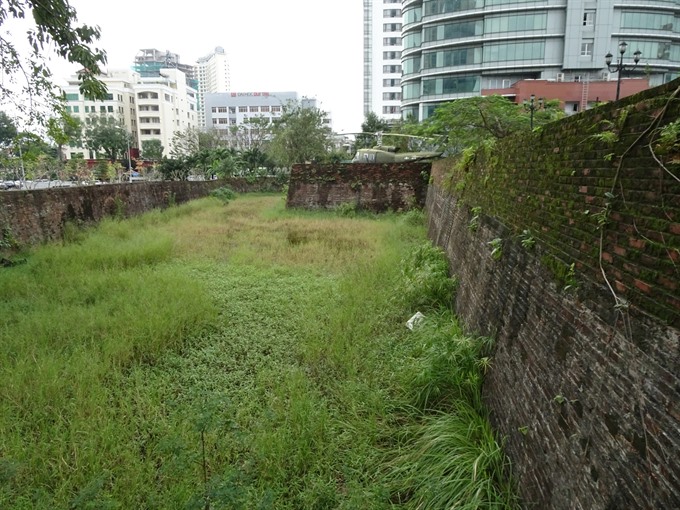Dien Hai Citadel should be recognised: experts
The Dien Hai Citadel in Da Nang should be restored as a historical landmark to attract locals and visitors from both home and abroad, according to the National Heritage Council.
 |
| Way in: An entrance at the Dien Hai Citadel. — VNS Photo Tran Lam |
The Vice-chairman of the National Heritage Council, Mr Dang Van Bai, said this at a recent seminar on restoration and conservation of the citadel. The 25- member council agreed to recognise the citadel as a National Special Relic.
Mr Bai said it was impossible to fully restore the citadel due to a shortage of original documents and designs.
He suggested the city should restore a part of the remaining architecture, including walls, trenches and gates, using technology (3D screen).
“The main structure has been damaged or encroached on by locals living nearby and other projects. We could only rebuild a small part of the citadel,” Mr Bai said.
“The citadel may be the last monument in Da Nang that symbolise the great sacrifice of Da Nang’s people and Vietnamese soldiers in the fight against the French-Spanish colonial forces between 1858 and 1860.
“It’s also a close link to the command of Nguyen Tri Phuong (1800 - 1873), a famous general who commanded a Vietnamese army and civilians,” Mr Bai said.
Mr Bai said the city still preserved the graveyard of French-Spanish coalition soldiers who died during the 1858 - 1960 fighting.
 |
| What’s left: A section of two layers of walls and a trench at the Dien Hai Citadel — VNS Photo Tran Lam |
The Director of the city’s Culture and Sports Department, Mr Huynh Van Hung, said the citadel structure was changed by the development of buildings between 1895 and 2014.
He said a military hospital was built by the French on the citadel in 1895.
After 1975, the citadel was used as drug production factory for the central pharmaceutical enterprise.
Although the structure was recognised as a National Relic in 1988, many sections of walls and trenches of the citadel were damaged during the construction of a pharmacy store, Mr Hung said.
He said conservation and restoration of the citadel only began in 2004 after it was removed, but the city then built the Museum of Da Nang in the area in 2007.
Mr Hung said the historical value of the citadel was reviewed by the city in 2016 and the removal of residential buildings and households began early this year.
He said the restoration of the citadel will be done with help from architects, historians and archaeologists.
Mr Phan Thanh Hai, the Director of the Hue Monuments Conservation Centre, said the citadel was designed by King Gia Long.
He said the restoration should be linked in with the city’s administrative centre as a tour route.
“A 3D demonstration of the citadel and the fight against French-Spanish coalition forces in 1858-60 will help visitor imagine the old citadel because most of the original structure of the citadel was damaged,” Mr
Hai said, adding that the An Hai citadel, which was built on the other side of the Han River at the same time with Dien Hai, was even more badly damaged.
“The restoration of the relic aims to create a unique attraction to tourists,” he said.
Mr Hai said the city hosted 6.6 million tourists, of which 2.3 million were foreigners, in 2017, but only 3% came to the site.
He said once restored it should be able to generate revenue to help with restoration work.Mr Hai noted that the Hue Monument complex attracted 3 million tourists in 2017, earning 310 billion VND (13.7 million US$).
Mr Ha Phuoc Mai, the former Director of Da Nang Museum, said a big archaeology dig was needed to find historical artifacts.
Mr Mai said a cannon was found during construction of a kindergarten building, but it was stolen. Last year, the city proposed that 11 iron cannons, which were cast during the Nguyen Dynasty between 1802 and 1860 and unearthed at the Dien Hai Citadel between 1979 and 2008, to be recognised as a national treasure.
(Source: VNS)